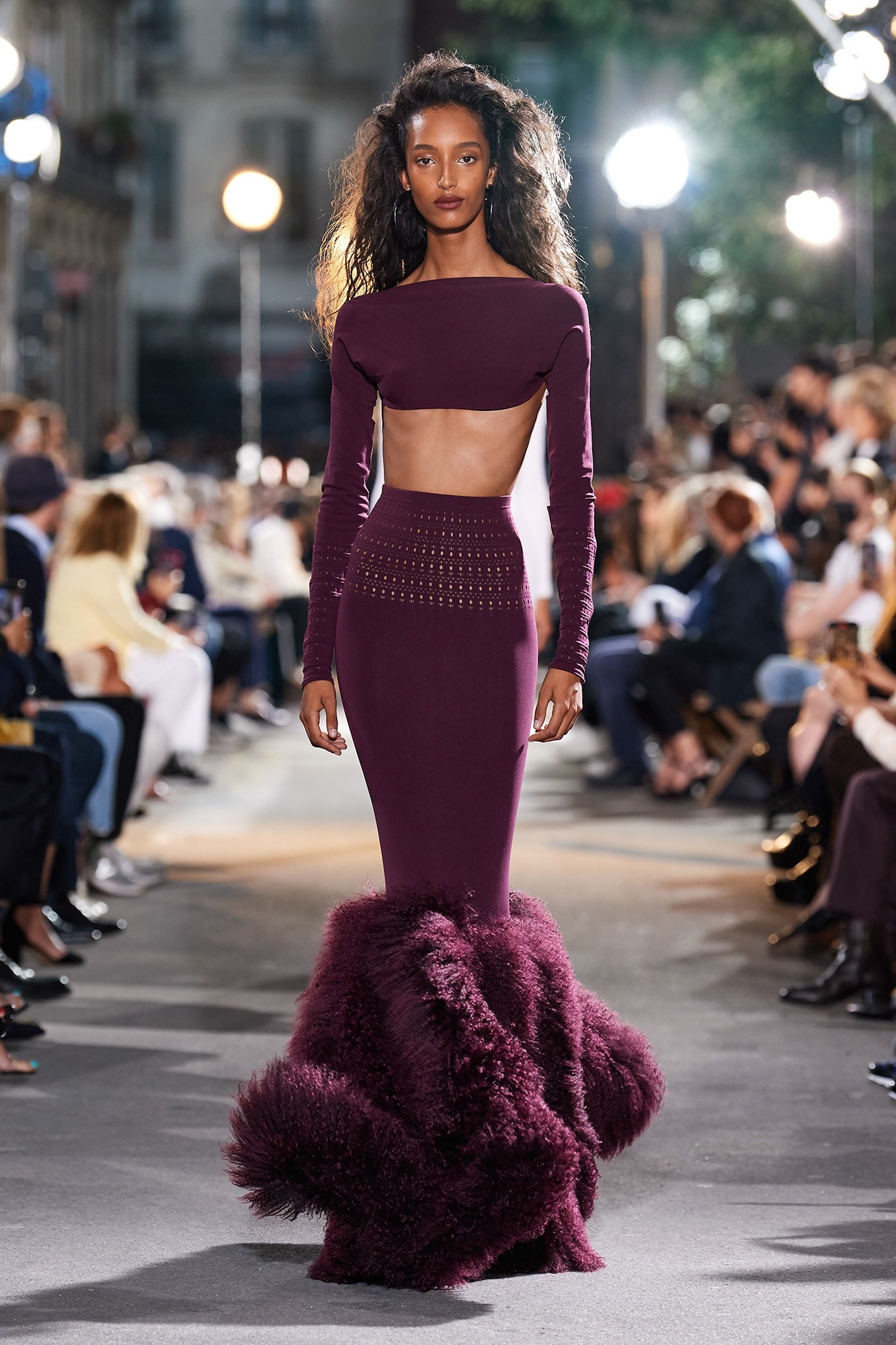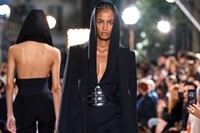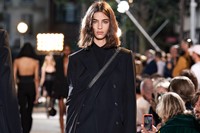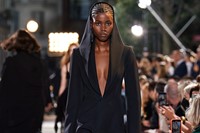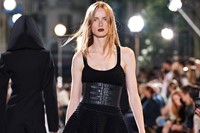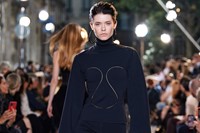How do you debut for a fashion house like Alaïa – where the founder passed away barely three years ago, yet was a legend in his own lifetime? Azzedine Alaïa is on a par with greats like Dior and Balenciaga – indeed, he was trained by the former, if only for ten days, and often named a modern incarnation of the latter. But his memory is still very much alive with those who knew him and loved him – including myself.
Pieter Mulier, the designer tasked with that difficult challenge, decided to do so quietly and respectfully. He didn’t even invite a rabble of fashion press into the hallowed halls of Alaïa – where he has only been the resident designer since February. Rather, he showed on the street outside of Alaïa’s maison in the Marais, where the designer originally lived and worked. His sinuous reiterations of Alaïa’s archetypal silhouettes walked the concrete between a Monoprix supermarket and a rowdy gay bar. I couldn’t help but think Azzedine would have adored that contrast – he was, after all, the originator of the high-low designer collaboration, creating clothes criss-crossed with the houndstooth check of French mass-market store Tati. And both the designer, his dogs, and his phalanx of supermodels – Naomi, Linda, Helena, and the rest – were often photographed on these streets, unreal figures of glamour somehow automatically grounded when unleashed on the Parisian cobbles. Later, you would see the equally unreal figure of Azzedine Alaïa himself – the master – in the Marais, always dressed in black cotton pyjamas, perhaps buying pasta to make lunch.
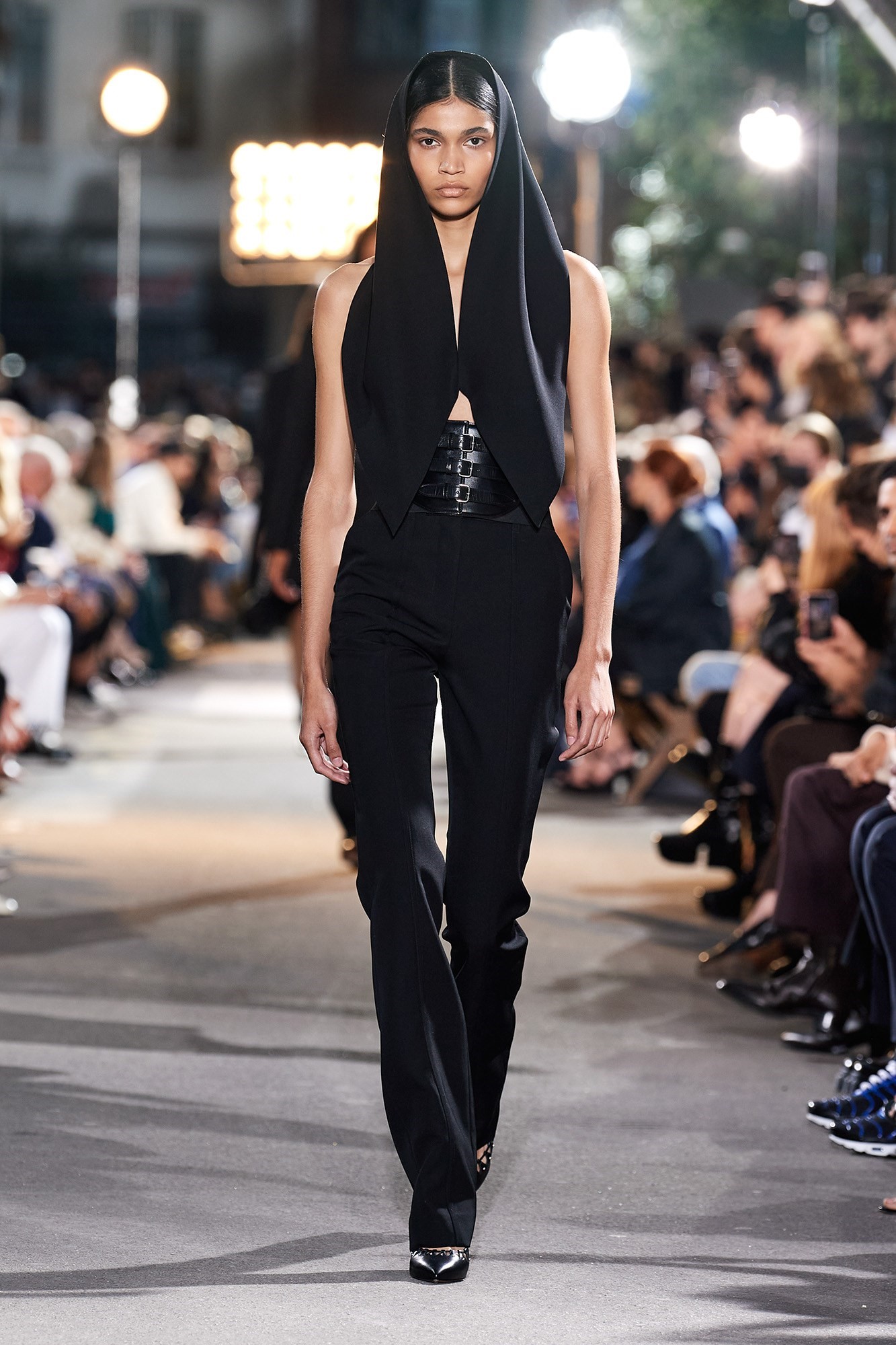
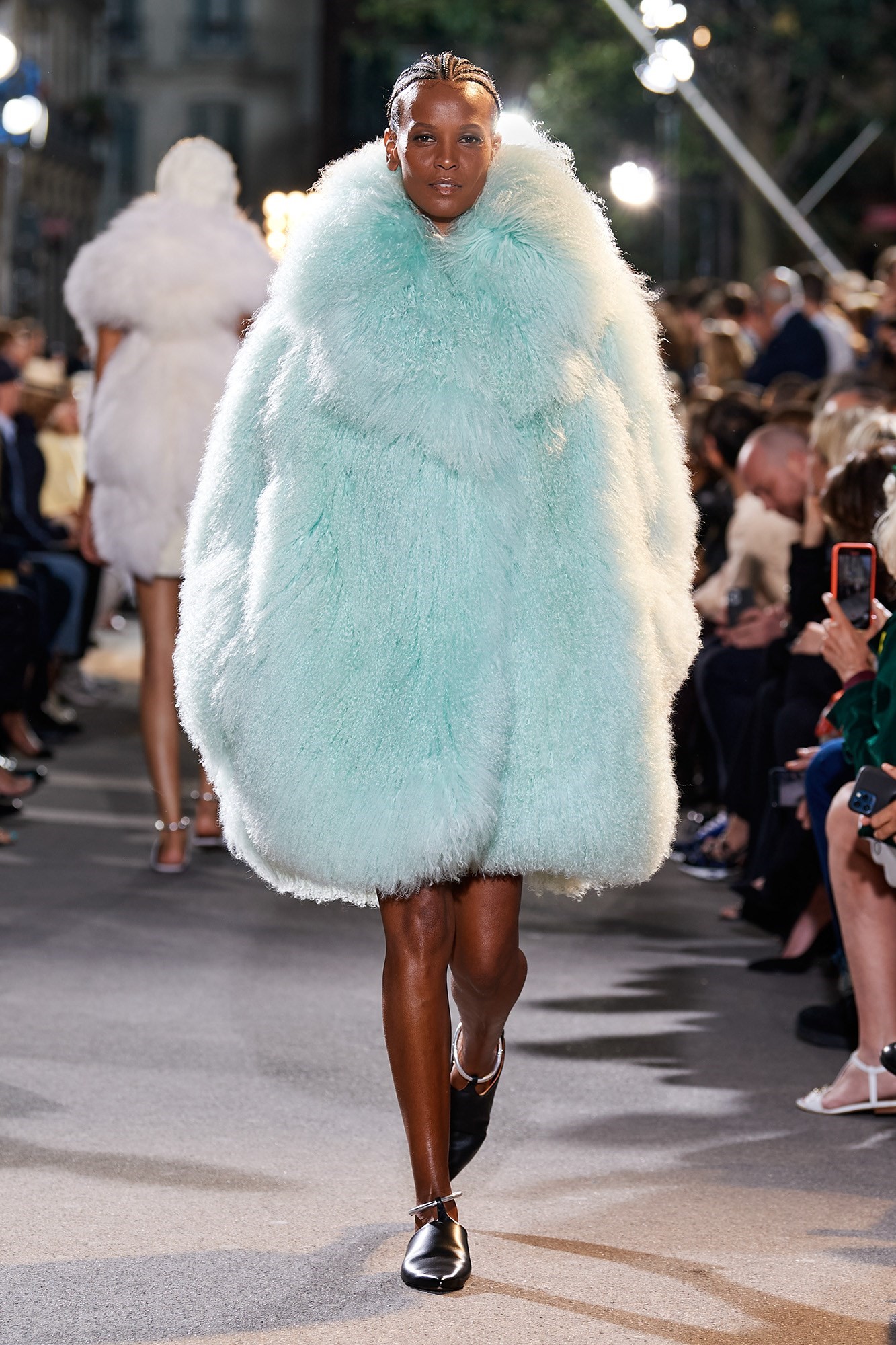
In the three years since Azzedine Alaïa’s passing, the brand has developed existing silhouettes and fabrications, as well as re-issuing pieces from the archive that feel timely: a kind of fashion greatest hits album. This, then, was the first true iteration of Alaïa after Alaïa – of not a reiteration, but an evolution, and back on the streets. It was gentle, modest, yet had force – much like Alaïa himself.
It also, undoubtedly, drew on the rich wellspring of the founder’s creativity, selecting elements from his back catalogue and working them into new garments. A sinuous U-shaped openwork seam tracing across the torso, clinging knits, capacious, grandly-proportioned coats, hooded heads and waists wasped by wide leather corset-belts, all paid direct tribute to the work of the founder, referencing specific collections and instantly identifiable ‘moments’ – there was much play with studded leather, a throwback to a coat and gauntlet gloves that rocketed the Alaïa name to fame back in 1981. Indeed, for this beginning Mulier went back to Alaïa’s beginning, riffing on hallmarks that Alaïa introduced then, and explored over and over.
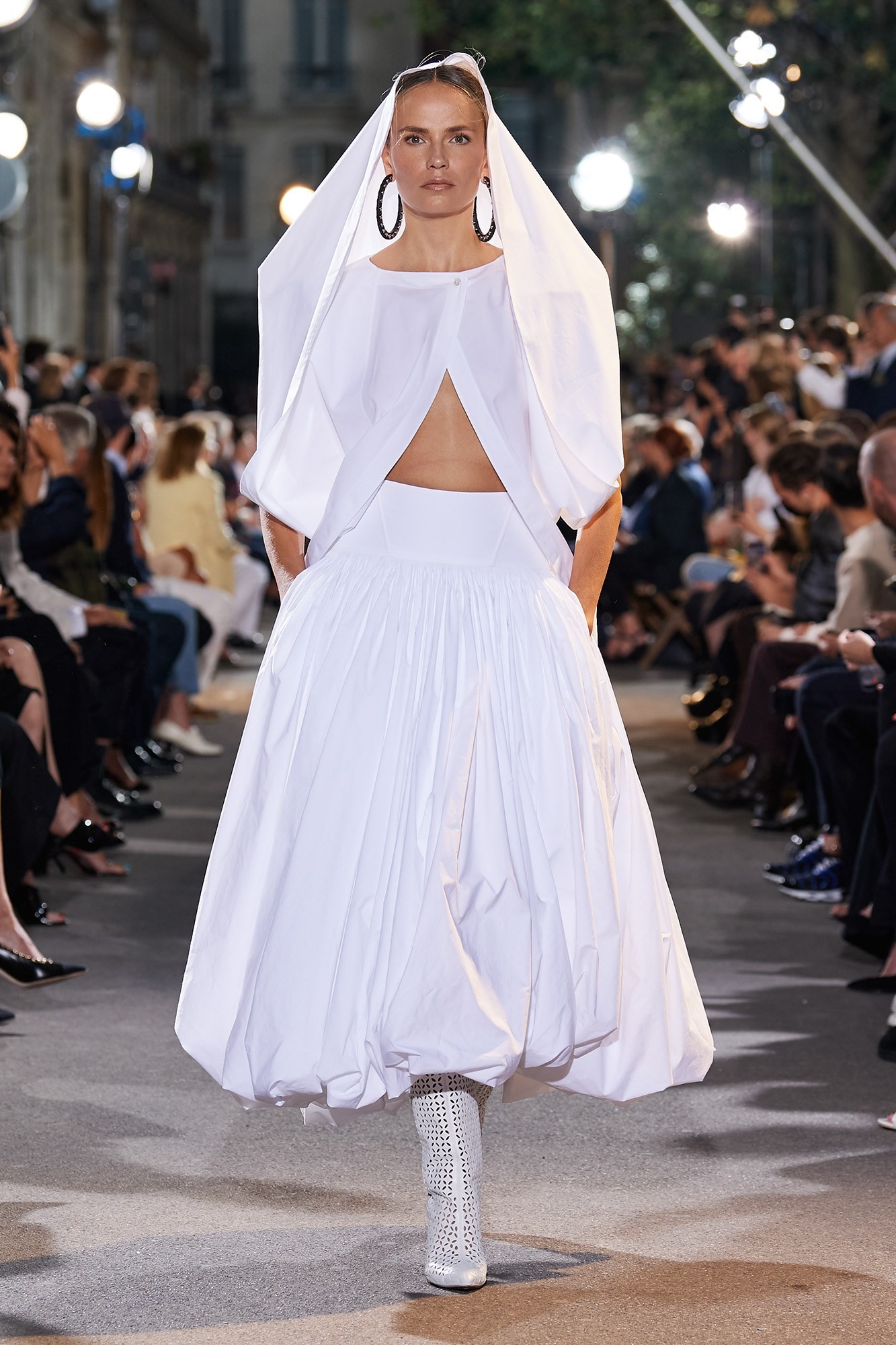
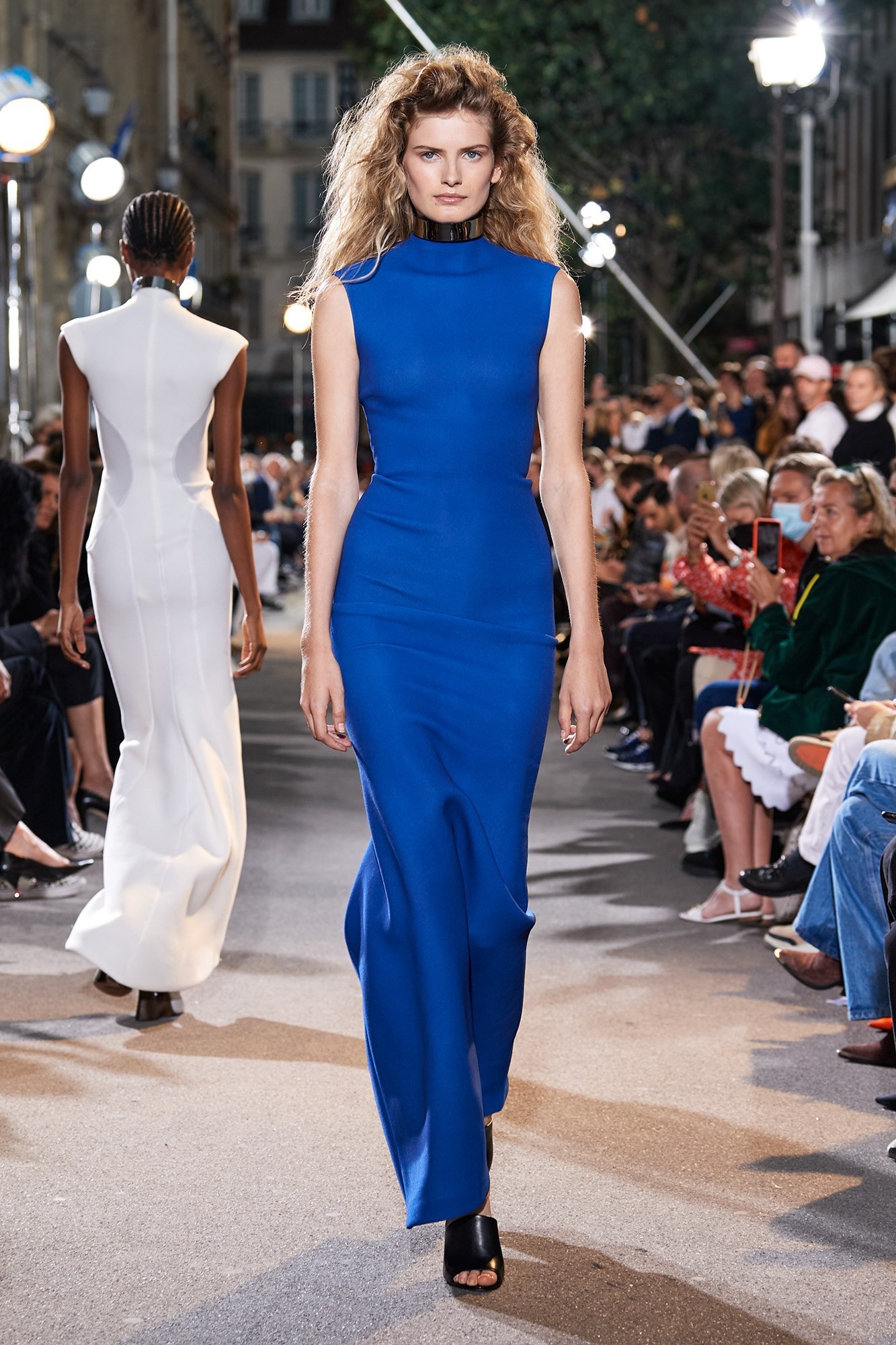
“Sensuality” and “sexuality” were words Mulier used, about silhouette and fabric – and, most importantly, attitude. And the sense of the hand was omnipresent, evoked also in the invitation – a lithograph reissued by the artist Cesar, of a gargantuan brass female breast that sits in the courtyard of Alaïa. The closest fashion comes to art is haute couture, which Alaïa excelled in and pushed to new levels – and this collection was, unofficially, the kick-off to the Autumn/Winter 2021 couture season in Paris, featuring the first physical, in-person haute couture presentations since before the Covid-19 pandemic began. Azzedine Alaïa, however, never liked to play by the rules – in a house tradition of non-conformity, this collection muddled up ready-to-wear and couture gloriously, just as Alaïa himself always did. Although, you kind of guessed that the couture was stuff like the form-fitting gowns, the dresses embroidered with hundred of jingling bells, or the expansive, glossy python coat (shades of Alaïa Autumn/Winter 1990, for the geeks among you). The expertly-crafted knits and sharp tailoring is destined for stores worldwide later this year.
“A tribute to thank you,” was how Mulier described the collection. It was fitting – both the material, and the emotion.
